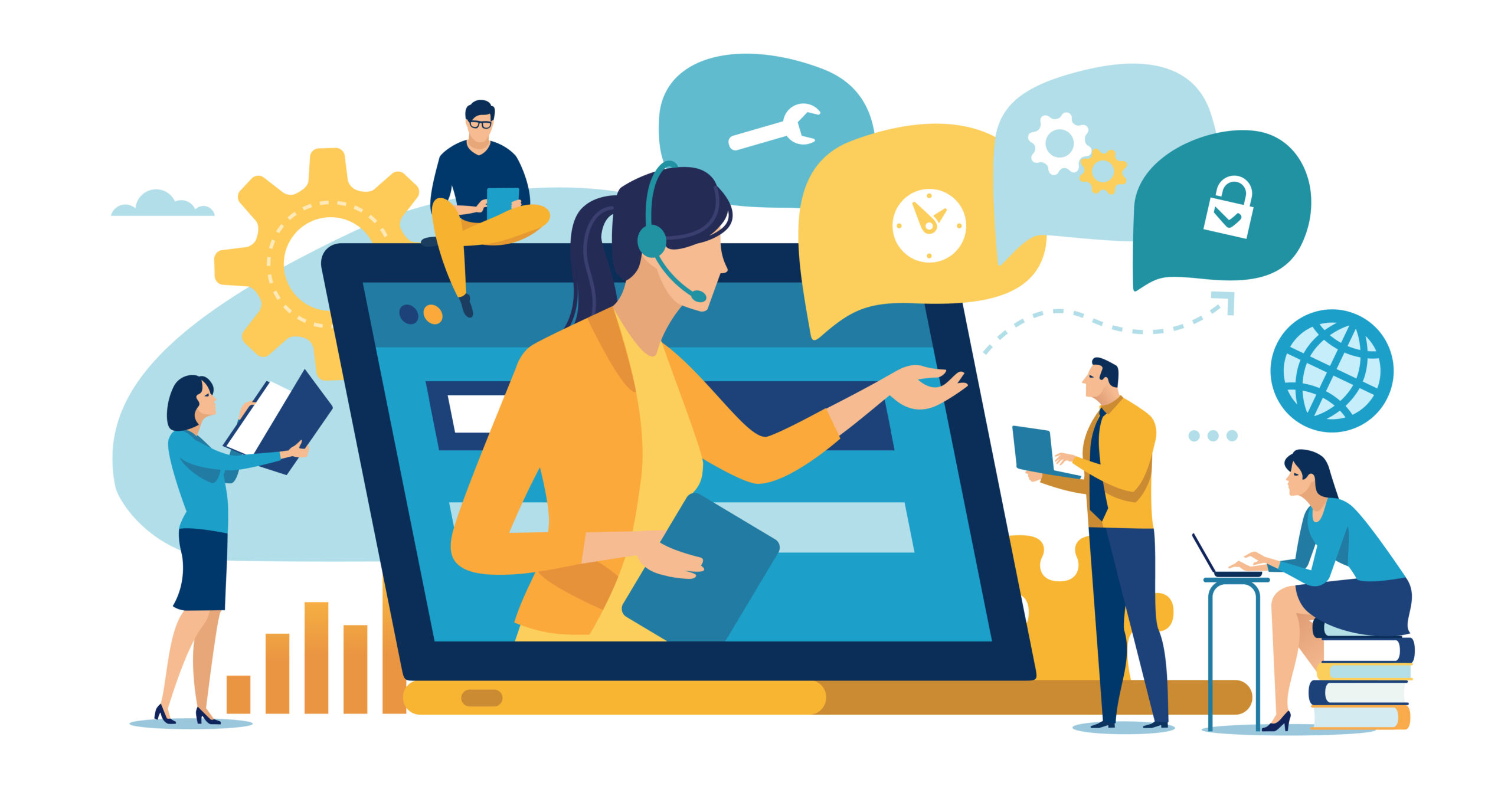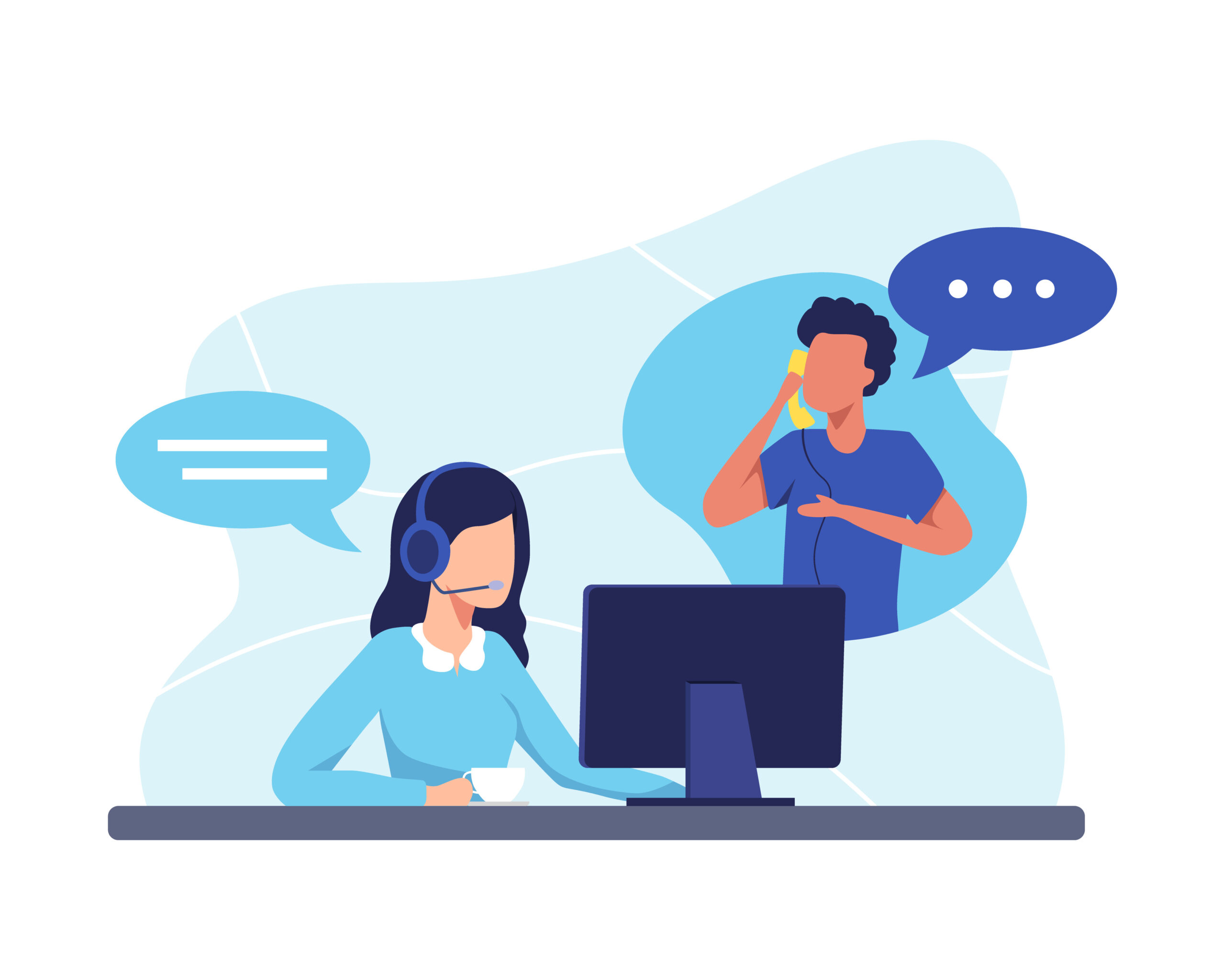In the competitive landscape of phone repair businesses, delivering exceptional customer service is paramount. Your customer service team serves as the frontline ambassadors of your brand, shaping the overall experience and satisfaction of your clientele. In this guide, we’ll explore key strategies and best practices to train your customer service team for unparalleled success in the phone repair industry.
Access unmatched digital marketing solutions and exclusive insights by connecting with our team at Repair Leads now. Take your business to new heights with our professional advice!
How to Train Your Customer Service Team for Success
Understanding the Importance of Customer Service in Phone Repair
In the competitive realm of phone repair services, customer service stands as a critical differentiator that can set your business apart and drive customer loyalty. It transcends mere transactions, becoming the cornerstone of customer trust and relationship building. This is especially true in phone repair, where customers often approach in moments of frustration or need due to device issues. Here’s how empathetic and effective customer service can transform challenges into opportunities for demonstrating your commitment and expertise:
- Building Trust: In an industry where trust is paramount, exceptional customer service is key. By addressing concerns with transparency and offering clear, honest advice, you build a foundation of trust with your customers.
- Fostering Relationships: Beyond the initial service, customer service is about establishing ongoing relationships. Follow-up communications, personalized advice, and checking in on repairs can turn a one-time visitor into a loyal customer.
- Exceeding Expectations: Customers remember service that goes above and beyond. Whether it’s offering a faster turnaround time than promised, providing a temporary phone during repairs, or simply delivering services with a smile, exceeding expectations creates memorable experiences.
- Alleviating Stress: A malfunctioning or damaged device can be a significant source of stress for customers. Empathetic listening, expressing understanding, and assuring them of a solution can alleviate their concerns, making the repair process as stress-free as possible.
- Showcasing Expertise: Every interaction is an opportunity to demonstrate your knowledge and expertise. Offering insights into the cause of the issue, tips for future prevention, and clear explanations of the repair process educates customers and highlights your expertise.
For repair store owners aiming to attract more customers and cultivate loyalty, investing in customer service training for your team is essential. Training should focus not only on the technical aspects of phone repair but also on communication skills, empathy, and strategies for exceeding customer expectations. By embedding exceptional customer service into the fabric of your business, you create a competitive advantage that attracts customers, encourages word-of-mouth referrals, and fosters a loyal customer base.
Crafting a Customer-Centric Culture
In the dynamic environment of a repair store, creating a customer-centric culture is paramount for attracting and retaining customers. Here are detailed strategies and key points to enrich the “Crafting a Customer-Centric Culture” section of your article, focusing on empathy, communication, and problem-solving:
Mastering Communication Skills
- Enhancing Verbal Communication: Focus on the nuances of tone, speed, and clarity of speech. A friendly, patient, and understanding tone can ease customer anxiety, making the service experience more pleasant.
- Effective Non-Verbal Communication: Train on the importance of body language and facial expressions, especially for in-store interactions. A welcoming smile, eye contact, and open posture can make customers feel more at ease.
- Language and Terminology: Educate your team on using layman’s terms when explaining technical aspects, avoiding jargon that could confuse customers. This clarity helps in demystifying the repair process and sets realistic expectations.
- Feedback Loops and Adaptation: Encourage open channels for customer feedback and teach your team to adapt their communication style based on customer preferences and feedback, ensuring continuous improvement in service delivery.
The Art of Empathy and Active Listening
- Cultivating Genuine Empathy: Train your team to genuinely empathize with customers, understanding the frustration and inconvenience of device issues. This connection goes beyond mere customer service; it’s about humanizing interactions and making customers feel valued and understood.
- Active Listening Techniques: Implement training that enhances listening skills, focusing on paying full attention, asking clarifying questions, and repeating back what the customer has said to confirm understanding. This ensures customers feel heard and their concerns fully grasped.
- Emotional Intelligence Development: Foster emotional intelligence in your team, enabling them to manage and harness emotions to facilitate smooth interactions, even in stressful situations. This skill is crucial when dealing with upset or frustrated customers.
- Building Rapport and Trust: Use empathy and active listening as tools to build rapport with customers. Trust is established when customers feel genuinely cared for, turning them into loyal advocates for your brand.
Problem-Solving Proficiency
- Creative Problem Resolution: Instill a culture of creative thinking, encouraging team members to find innovative solutions to unique customer issues. This not only solves the problem at hand but often exceeds customer expectations.
- Systematic Approach to Problem-Solving: Adopt a structured problem-solving framework (such as Identify, Plan, Execute, Review) for consistency and efficiency in handling customer issues. This methodical approach ensures no step is overlooked in the rush to provide a solution.
- Empowerment and Autonomy: Empower your team with the authority to make decisions on the spot. This autonomy can significantly speed up the resolution process, enhancing the customer’s experience.
- Proactive Issue Identification: Train your team to identify potential issues before they escalate, addressing them proactively. This foresight can prevent many customer frustrations and demonstrates your commitment to high-quality service.
By implementing these detailed strategies into your training program, repair store owners can foster a customer-centric culture that not only addresses customer needs effectively but also builds a loyal customer base through positive, memorable service experiences.
From Theory to Practice: Implementing Training Programs
- Blending Theory with Hands-On Learning: Combine theoretical knowledge with practical exercises. For instance, after a session on customer service principles, conduct role-playing activities that simulate challenging customer interactions specific to repair scenarios.
- Customized Real-Life Scenarios: Create training modules based on actual customer service situations your team has encountered. This approach helps staff relate to and understand the content better, ensuring they’re well-prepared for similar future interactions.
- Ongoing Learning and Development: Emphasize that training is an ongoing process, not a one-off event. Schedule regular training updates to refresh skills and introduce new techniques or technology relevant to the repair industry.
- Peer-to-Peer Learning Sessions: Encourage more experienced team members to share insights and tips with newer colleagues. This not only fosters a collaborative team environment but also leverages internal knowledge effectively.
Leveraging Technology for Training
- Online Learning Platforms: Utilize online platforms to provide flexible learning options for your team. These platforms can host a variety of content, including instructional videos on new repair techniques or customer service best practices.
- Interactive Modules and Webinars: Incorporate interactive e-learning modules and live webinars that allow for real-time questions and answers. This can be particularly useful for demonstrating complex repair processes or discussing nuanced customer service scenarios.
- Virtual Reality (VR) Training: Explore the use of VR for immersive training experiences, especially for technical skills development. VR can simulate real-life repair scenarios in a controlled environment, enhancing hands-on learning without risking actual devices.
- Multimedia Tools for Diverse Learning Styles: Employ a mix of texts, videos, infographics, and quizzes to cater to different learning preferences. This variety ensures that training materials are accessible and engaging for everyone on the team.
Measuring Success and Monitoring Progress
To ensure your customer service training program is driving success and contributing to the growth of your repair business, it’s vital to implement robust methods for measuring success and fostering continuous improvement. Here’s an enhanced approach to monitoring progress and soliciting feedback, designed specifically for repair store owners aiming to attract more customers:
Tracking Success Metrics
- Identify Key Performance Indicators (KPIs): Determine which metrics best reflect the quality and effectiveness of your customer service. These could include customer satisfaction scores, the speed of service (response and resolution times), and the rate of return customers. These indicators will help you gauge the impact of your training programs.
- Regular Assessment and Analysis: Conduct frequent evaluations of these KPIs to understand how your team is performing over time. This continuous monitoring allows you to pinpoint successes and areas needing improvement.
- Celebrate Team Achievements: Recognize and celebrate when your team meets or exceeds set KPIs. This not only boosts morale but also reinforces the value of the training they’ve received.
- Adjust Training Based on Metrics: Use the insights gained from your KPIs to make informed adjustments to your training programs, ensuring they are always aligned with your goals for customer service excellence.
Soliciting Feedback and Continuous Improvement
- Establish Open Feedback Channels: Create an environment where team members feel comfortable sharing their experiences and insights. This could be through regular meetings, suggestion boxes, or anonymous surveys.
- Engage Customers for Feedback: Actively seek out customer feedback through surveys, follow-up calls, or digital platforms. Understanding their perspective is crucial for assessing the effectiveness of your customer service and identifying areas for enhancement.
- Analyze Feedback for Actionable Insights: Regularly review the feedback from both customers and employees to identify common themes or recurring issues. This analysis can reveal valuable insights into both the strengths and weaknesses of your current training and service strategies.
- Implement a Cycle of Improvement: Use the feedback gathered to continuously refine and evolve your training programs. This should be an ongoing process, with each iteration aimed at better meeting the needs of your customers and enhancing their overall experience with your repair service.
By focusing on these detailed strategies for measuring success and soliciting feedback, repair store owners can create a dynamic and responsive customer service training program. This approach not only ensures the continuous skill development of your team but also aligns closely with the ultimate goal of increasing customer satisfaction and loyalty, thereby attracting more customers to your business.
In the competitive realm of phone repair services, excellence in customer service can dramatically set your business apart. Committing to an extensive training regimen for your customer service team transcends the mere act of resolving technical issues; it transforms every customer interaction into an impactful, positive experience that lingers well beyond the service encounter. Training your staff in empathy, effective communication, and problem-solving not only lays the groundwork for a customer-first culture but also serves as a strategic investment in your business’s longevity and reputation. This commitment to elevating customer service is the cornerstone upon which lasting business success is built, enabling your enterprise to flourish in a bustling market.
The journey towards transforming your phone repair business with superior customer service training is a clear path to differentiating your brand and cultivating customer loyalty. By prioritizing customer satisfaction through skilled and empowered service teams, you unlock a new level of business achievement. This optimistic approach towards customer service is not just a mere business strategy; it’s a visionary commitment to excellence and customer satisfaction that can elevate your business to unprecedented success. As you navigate towards this goal, remember that the essence of your business’s triumph lies in the quality of service and the memorable experiences you provide, positioning your repair service as the go-to destination in a competitive landscape.


